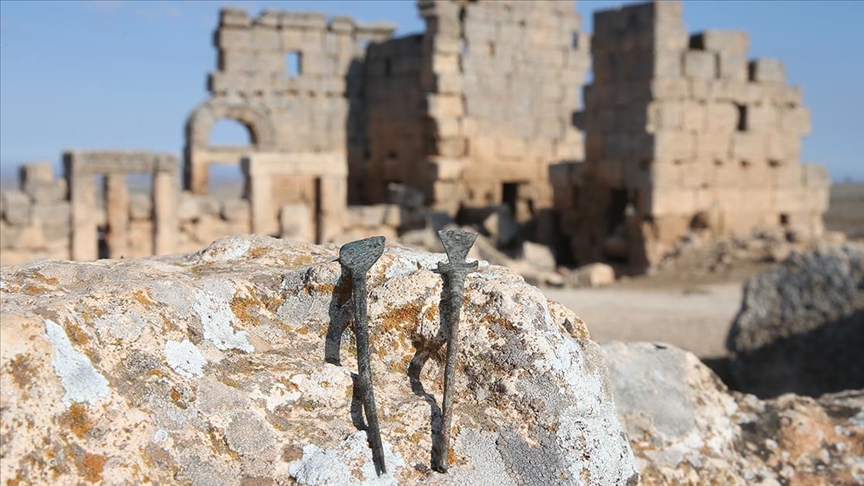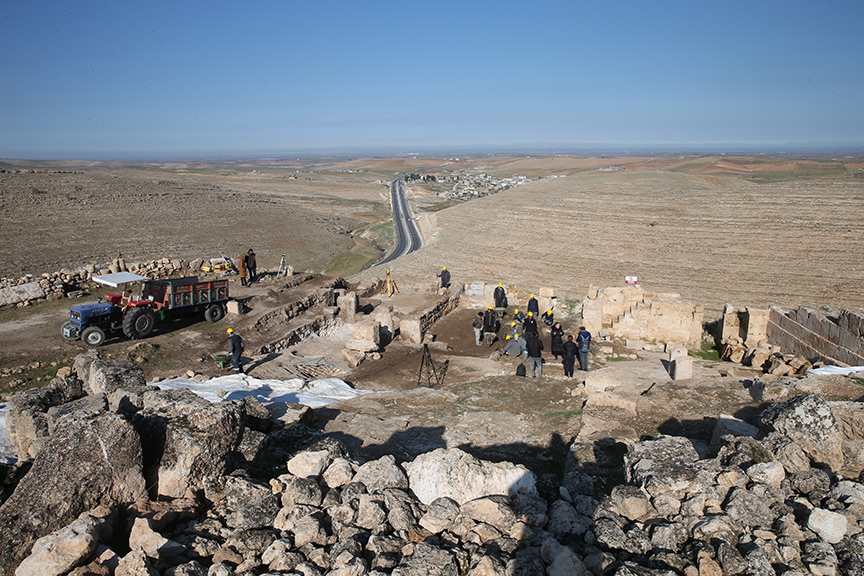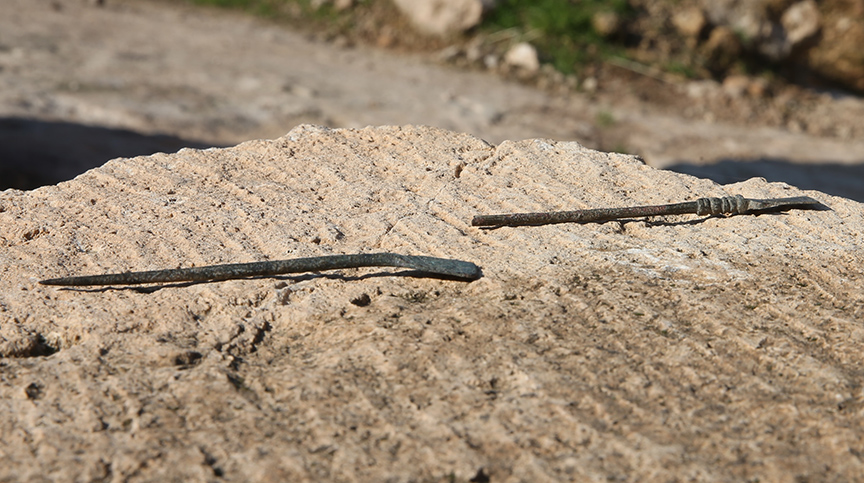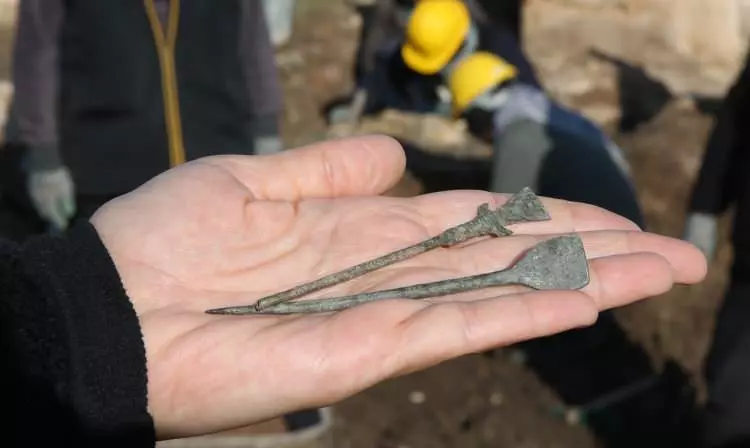
1800-year-old surgical instruments found in Zerzevan Castle
During excavations at Zerzevan Castle in the Çınar district of Diyarbakır, southeastern Turkey, 1800-year-old surgical instruments were found near an underground temple of the Mithras religion.
Excavations at Zerzevan Castle, which is on the UNESCO World Heritage Tentative List, have been ongoing since 2014. The excavations are supported by the Ministry of Culture and Tourism, the Governorship, Diyarbakır Museum, Çınar District Governorship and Dicle University.

To date, the remains of a 12-15 meter high and 1200 meter long fortification wall, a 21 meter high watch and defense tower, a church, an administration building, residences, grain and weapon storages, rock tombs, water channels and 54 water cisterns, an underground church, an underground shelter for 400 people, secret passages, an underground temple of the Mithras religion of the period, which lost its importance with the adoption of Christianity in the 4th century A.D., and many other artifacts have been unearthed on an area of 60 decares.
Excavation Head Assoc. Prof. Dr. Aytaç Coşkun shared the following information about the excavation works and the 1800-year-old surgical instruments unearthed.

“The most important find is the newly unearthed surgical instruments. This was a Roman garrison and military settlement. 1200 soldiers from the Legion (the name given to soldiers in the Roman army) stayed here. There are professional doctors moving with the soldiers. Many operations were probably carried out here. There are injuries both in wartime and during training. Therefore, there must have been a big operating theater. These instruments belonging to this operating room were unearthed in the sanctuary. They are small and around 12 centimeters. Both sides of these tools are used. Because there is a race against time, usually surgical instruments are made on two sides. One side is used for piercing and the other side is used for lifting and cutting the skin. Important surgeries are performed using these tools.”

Coşkun said the surgical instruments were made of bronze and were quite sharp.
Stating that work will continue in the area, Coşkun continued as follows:
“The hospital where these operations were carried out will also be unearthed. We found two tools during this year’s excavations. Since military injuries occur in military settlements, we will find many of these types of tools as the excavations continue. Thousands of artifacts were unearthed in the castle, the surgical instruments we found are 1800 years old. Our aim is to reveal the place where treatments and surgeries were performed. We also found many artifacts from 3000 years ago. We plan to launch the museum project soon, where thousands of artifacts will be exhibited. The artifacts will be exhibited in this museum to be built at the entrance of the castle.”
You may also like
- A 1700-year-old statue of Pan unearthed during the excavations at Polyeuktos in İstanbul
- The granary was found in the ancient city of Sebaste, founded by the first Roman emperor Augustus
- Donalar Kale Kapı Rock Tomb or Donalar Rock Tomb
- Theater emerges as works continue in ancient city of Perinthos
- Urartian King Argishti’s bronze shield revealed the name of an unknown country
- The religious center of Lycia, the ancient city of Letoon
- Who were the Luwians?
- A new study brings a fresh perspective on the Anatolian origin of the Indo-European languages
- Perhaps the oldest thermal treatment center in the world, which has been in continuous use for 2000 years -Basilica Therma Roman Bath or King’s Daughter-
- The largest synagogue of the ancient world, located in the ancient city of Sardis, is being restored











Leave a Reply